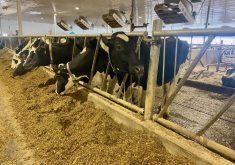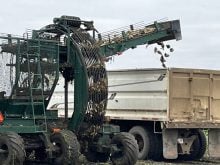Q: We have just had a suicide in our community. A young person killed himself. I doubt that he was 20 years old. This is the third time a young person has killed himself in the past seven years.
We probably have less than 1,000 people living here and 200 in high school so three deaths seems to me like a lot. We have formed a committee to discuss it and perhaps to try to do something for the kids in our town so that they won’t commit suicide. Do you have
Read Also

Accurate accounting, inventory records are important
Maintaining detailed accounting and inventory records is not just a best practice; it’s a critical component of financial health, operational efficiency and compliance with programs like AgriStability.
any suggestions?
A: My prediction is that once you set up your committee, someone is going to suggest that you invite young people to a meeting and ask them what they want.
Before you invest in an exercise gymnasium or a drop-in centre for the kids, which may be what they ask for, remember that these are young people who often say they have nothing to do, even though they have ATVs in the garage, cellphones, computers and the latest electronic games.
Don’t get me wrong. Gymnasiums or drop-in centres are great, as are skating rinks and baseball diamonds, but that will not necessarily solve your suicide problem.
A more likely antidote is to look for programs that thrive on commitments from the young people involved, and in return help them tackle the problems
they face in adolescence.
Most of the national programs directed toward young people – cadets, 4-H, Scouts and Guides, church groups – have built large components for personal growth into their agendas.
If youth in your community do not want to participate in these traditional programs, you can start community programs, weekly discussion groups or weekend workshops.
National or community programs include ways in which your young people can deal with issues they
face when they go to school or walk down the streets to the local café.
Can you get a group of people to help the kids deal with bullying? Can you find a way to reach out to kids who are lonely? Do you have ways to encourage children when their parents are caught up in drugs and alcohol? What do kids in your town do when they get depressed?
Do your young people feel comfortable knowing that some day they will likely have to leave home and head off to the city either for jobs or to study at one of the tech schools or universities?
How can young people contribute to others in the community, to some of the senior citizens living there, the disabled, or even to some of the impoverished families?
All of these are important issues for young people, ones that some of them think about daily. I suspect that if they had some help working through their thoughts, they might be less prone to personal difficulties.
Sometimes I think that we as adults forget how difficult adolescence can be. Of course, it is not always bad. We expect our kids to have fun, and they do, but young people these days are confronted with serious issues. They are making decisions that have overwhelming consequences for their personal lives and their families’ well being.
Perhaps if you made sure that some support is there to help the kids through their personal struggles, you might better confront the suicide problem.
Jacklin Andrews is a family counsellor from Saskatchewan who has taught social work at two universities. Mail correspondence in care of Western Producer, Box 2500, Saskatoon, Sask., S7K 2C4 or e-mail jandrews@producer.com.














